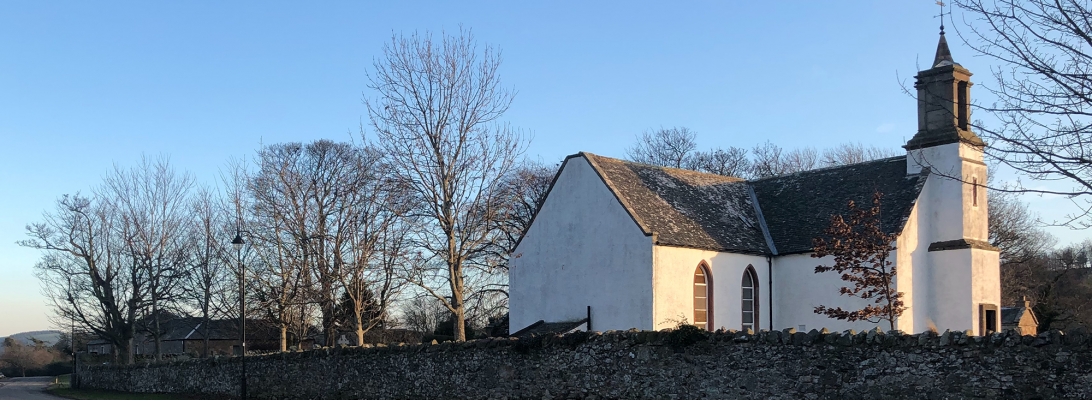Oldhamstocks is a very small village and civil parish hidden away in the rolling Lammermuir hills of Southern Scotland.
Oldhamstocks Parish is the easternmost parish of East Lothian. It has a short coastal strip to the north and is bordered by Innerwick on the west and Berwickshire on the east and south. In the 19th century a scant six landowners held most of the 6000 acres in the parish. The parish is long and thin, trending southwestward from the northern coastal portion, and terminates in a southeasterly oriented ‘dogleg’; at one time a detached portion was in Berwickshire. Fertile arable land borders the coast but the trend is to pastoral on the higher, inland parts of the parish. Dunglass Dean on the eastern edge provides a ‘green corridor’ between coastal and lowland portion and the Lammermuirs to the south. The population peaked at over 700 in the 1830s.
 The coastal strip is traversed by the A1 Trunk Road and the main east coast railway but the village itself is well hidden, lying on the south facing flank of a ‘hidden valley’, and reached only by minor country roads. No shops remain in the village, the school is long closed and the Church is now part of the united Dunglass Parish which also takes in Cockburnspath and Innerwick.
The coastal strip is traversed by the A1 Trunk Road and the main east coast railway but the village itself is well hidden, lying on the south facing flank of a ‘hidden valley’, and reached only by minor country roads. No shops remain in the village, the school is long closed and the Church is now part of the united Dunglass Parish which also takes in Cockburnspath and Innerwick.
The economy of the parish remains mostly agricultural and there is little trace remaining in the village of the rural industries (smiths, farriers, wrights, and masons) that supported the parochial farms. Timber plantations and grouse moors predominate in the inland parts where also wind turbines are an increasingly common sight.
The name has Anglo-saxon origins (meaning the farm of or by the old homestead); it had a priest in the 12th century and a church was consecrated 1242. A branch of the Hepburns acquired superiority of the parish by the 16th century but later the principal landowners were the Halls of Dunglass.
One notable individual from Oldhamstocks is John Broadwood. John was born in Cockburnspath and grew up in Oldhamstocks in 1732. He inherited his father’s profession of carpentry, before walking all the way from the village to London, where he founded the now world-renowned piano manufacturer John Broadwood and Sons.
Another noted person from the area (born 1811 at Birnieknowes to be exact) was Alexander Somerville who was the author of many books and pamphlets including “The autobiography of a working man” which cronicles the farming communities around Dunbar in the 1800’s
Every year in the third week of August the village holds the annual Flower Show, which always has a large turnout and hosts various activities including sporting events and various art, food and photography competitions.

